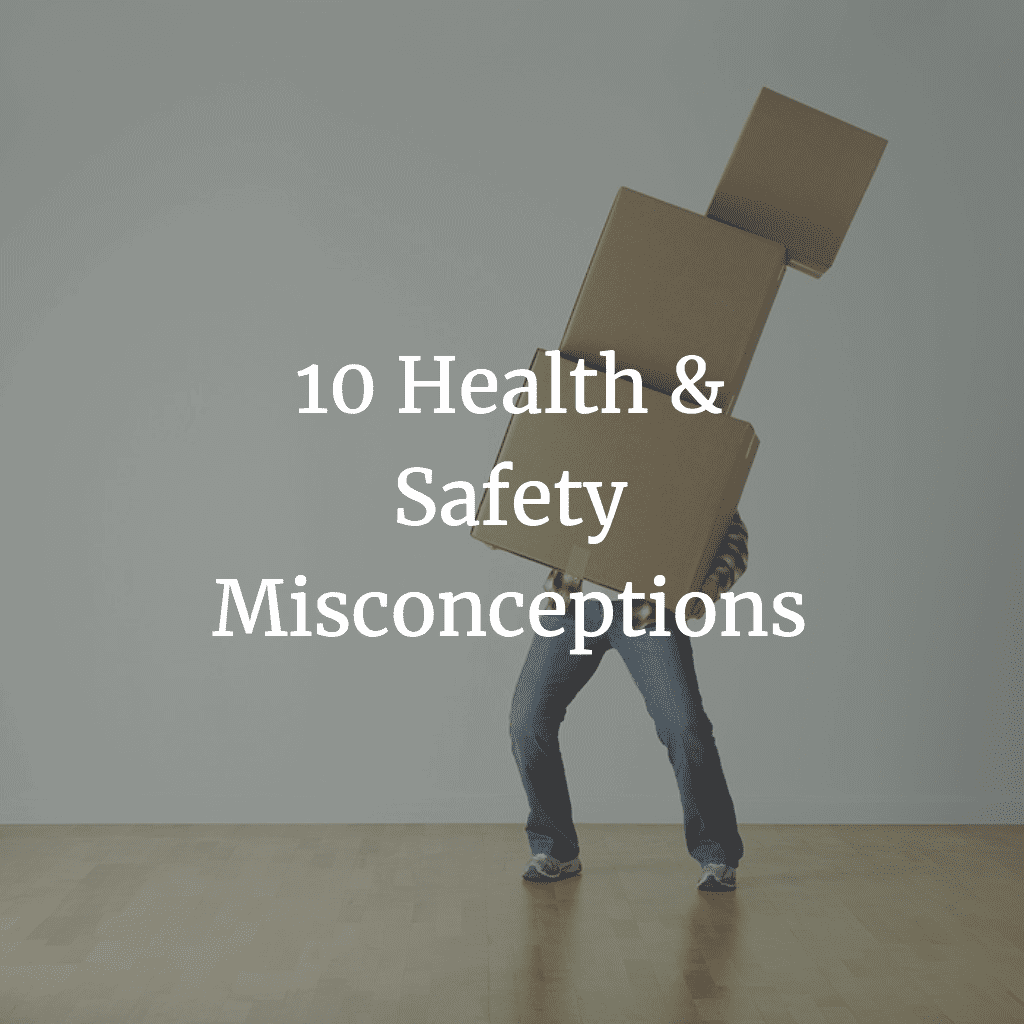 " alt="">
" alt="">

Businesses are becoming increasingly aware of best health and safety practice in the workplace, there still exists a number of misconceptions that prevent businesses from operating safely.
We take a look at some of the common misconceptions and how to overcome them in your workplace.
Computer users still need good Health and Safety. As an employer, you must protect your workers from the health risks of working with display screen equipment (DSE), such as PCs, laptops, tablets and smartphones.
Employers must:
In 2017/18 an estimated 6.6 million Working days were lost due to work-related musculoskeletal disorders related to DSE positions.
While there is often an immediate upfront cost to implementing health and safety systems, a cost/benefit analysis will likely prove that the cost of an accident far outweighs the costs of implementation.
As a result some direct and indirect costs of an unsafe workplace include;
In the UK, changes to the sentencing guidelines also means that large fines can be given for the presence of risk, even if an accident has not occurred. Recently a sub-contractor for Brown Construction Ltd had fallen through an opening and landed on his feet shattering his left heel. Brown Construction Ltd. was fined £17,333.
Health and Safety legislation around the world makes it absolutely clear that it is the businesses responsibility to ensure the safety and wellbeing of their employees.
While most businesses are aware that they are required to complete risk assessments and take all reasonable steps to eliminate and reduce risk, many are less sure on their responsibility when it comes to reinforcement.
However, it is the businesses responsibility to ensure all policies are reinforced and managed; including the use of personal protective equipment.
If an employee suffers an accident because they have failed to use PPE, the business is likely to be liable. Some of the steps the business should take include;
Equipment might appear safe, and usually, it is. It’s probably marked with precautions to take while operating it and comes equipped with safeguards galore, but there’s so much more to safe operations.
Remind your operators that they aren’t invincible. In addition to safety training, keep staff regularly informed on how to safely operate equipment, lock out/tag out procedures, and simple maintenance.
A long-standing safety record could simply be good luck, a good team or existing systems being sufficient at the time. However this does not mean that they will always work.
With workplaces constantly evolving, new hazards and risks are continually created. New employees come into the business, new roles are created, environments change and new equipment is introduced.
This is why regular risk assessments are extremely important. Risk assessments should be scheduled on a regular basis along with reviews of current procedures, to ensure that they are still relevant and effective.
It is also important to roll out appropriate training to new employees and carry out inspections and servicing on any equipment, tools and vehicles.
Research has shown that over 99% of all workplace accidents are avoidable. The key to identifying and mitigating risk is through risk assessments and correct procedures.
Human error might mean that there are still times where mistakes are made, but this does not make prevention any less important. In fact, if an accident does occur and the business can prove that there were procedures in place which were being reinforced, the business may be found not to be at fault or the fine will be significantly lower.
Liability insurance costs businesses on average 0.25 of their total payroll. It is a legal requirement to have this insurance in case someone is killed or injured through your negligence. This insurance should not be used as a substitute for good Health and Safety practices.
Profit should never take precedence over an employees health and safety.
An unsafe workplace will have a more detrimental impact on a companies profits. However workers who feel confident, safe and appreciated will produce a greater productivity rate and increased ROI.
No matter how minor the injury may appear, report the incident and injury immediately.
Reporting incidents, no matter how small they may seem, will ultimately allow organisations to create a safer work environment. While all businesses hold a legal duty to carry out risk assessments and take steps to reduce or eliminate the risk, some risks remain hidden and accidents do still happen. While a minor accident may go unreported, the next accident could be detrimental, causing serious harm and costing the business in legal proceedings and fines. Find out more on reportable incidents (source HSE.)
Health and safety guidelines can often be misinterpreted, leaving many feeling that health and safety has gone mad or blame a compensation culture.
In fact the number of civil claims for compensation against employers for accidents at work has fallen every year for the past 5 years. As for health and safety madness, this is usually down to misunderstanding, uncertainty or improper information being passed onto employees.
One well known case of this is the Costa Coffee milk mix up.
In a Costa Coffee cafe, a customer asked if the barista would be able to mix whole milk and skimmed milk for them. This was due to the fact that the cafe didn’t serve semi-skimmed milk, so you can imagine their shock when they were told that mixing milk would violate health and safety.
Costa says it is actually a trading standards issue and the barista misunderstood this information. Legally Costa cannot replace semi skimmed with other milks because this would not deliver the required fat content.
Health and safety should be taken seriously.
If you are unsure about health and safety guidance in your workplace, speak to our experts and see how our health and safety systems can reduce risks and restore clarity amongst your workforce.